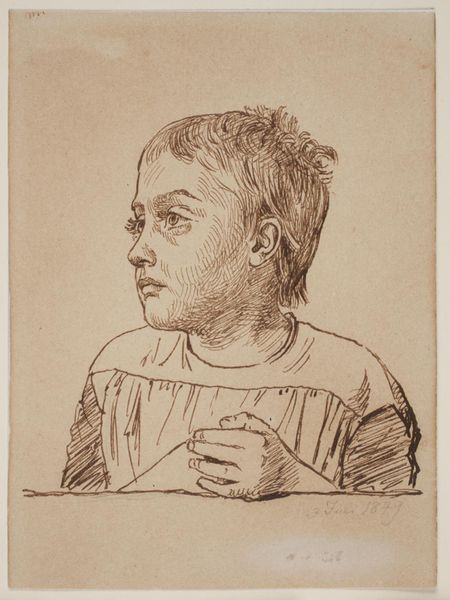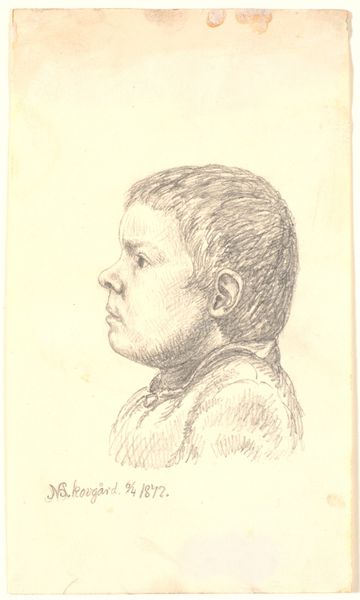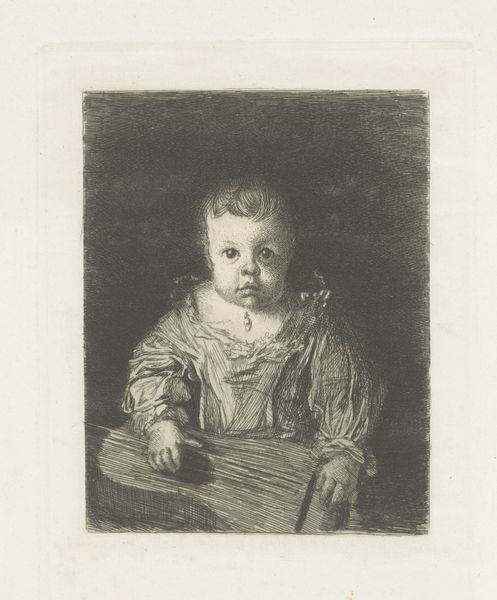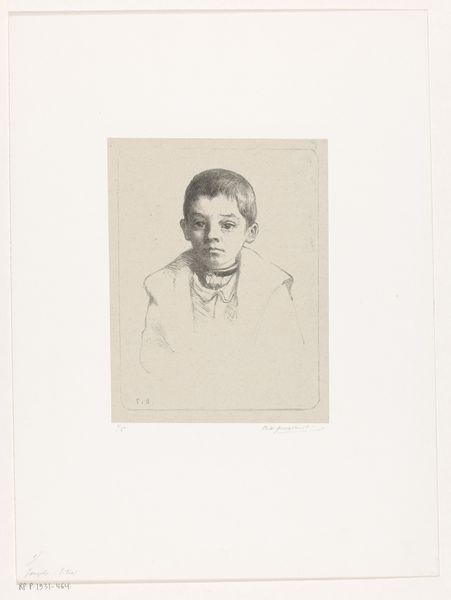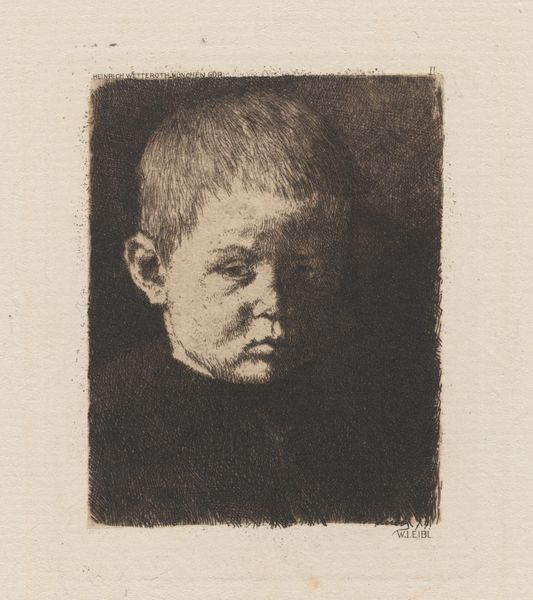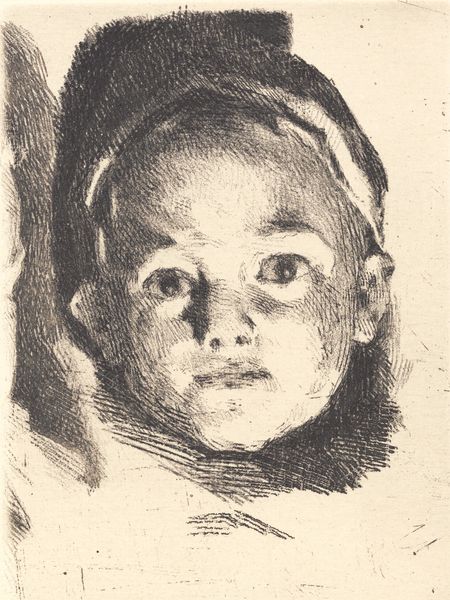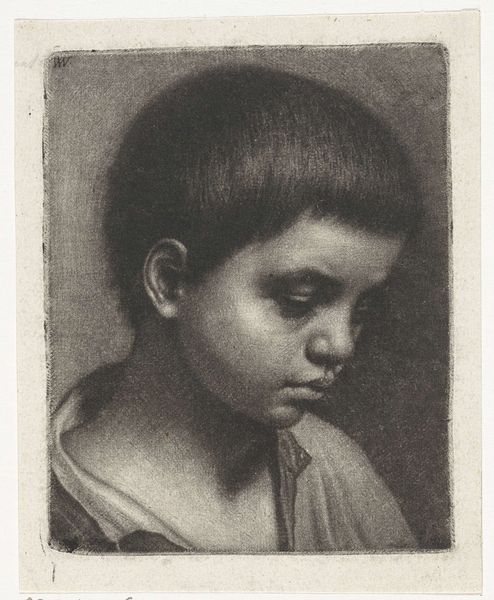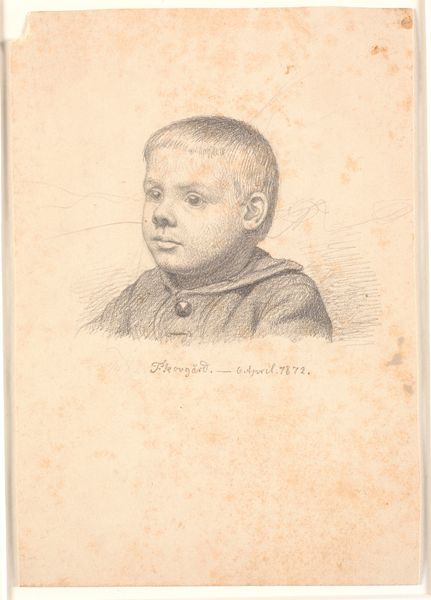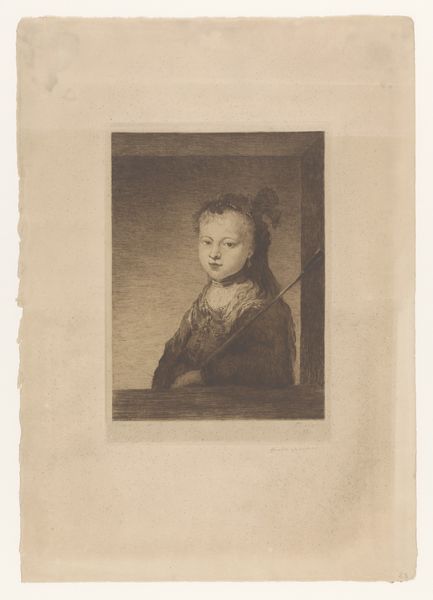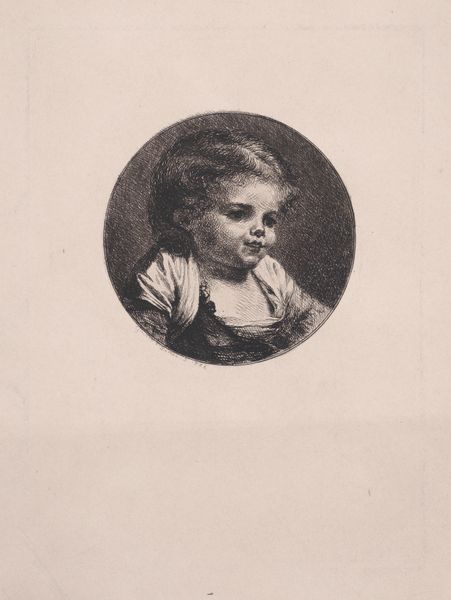
print, etching
#
portrait
# print
#
etching
#
figuration
#
portrait drawing
#
genre-painting
#
realism
Dimensions: 102 mm (height) x 80 mm (width) (plademaal)
Curator: Here we have an etching by Pietro Kobke Krohn from 1863. The work, presently housed at the SMK – Statens Museum for Kunst, is titled "Barneportraet. Adolphine Wilhelmine Petersen" and features a young girl. What's your immediate reaction to it? Editor: My first impression is one of quiet intensity. There’s something about the child's direct gaze, the unflinching quality of her eyes that draws me in. It feels both vulnerable and oddly powerful. Curator: Absolutely. And considering the conventions of portraiture at the time, where idealized and often embellished depictions were favored, Krohn's choice of realism here is significant. We have to ask ourselves what statements Krohn is trying to make through this deliberate unromantic portrayal. Consider also, it’s quite possible Adolphine belonged to the artist’s circle, adding an intimate social dimension to the piece. Editor: That rawness contributes to the emotional weight of the image, but even deeper than that, the composition with those cross-hatching shadows behind her make me think about a sort of protective shield, maybe reflecting on what safety for women and girls might mean in 19th-century Denmark? The shadows are almost figurative, like guardians or keepers, amplifying the focus on the girl's unwavering, almost knowing eyes. What do those eyes tell you? Curator: Eyes have always held potent symbolism – gateways to the soul, reservoirs of truth, and instruments of discernment. The detail within them underscores this concept of knowledge, awareness. Perhaps an acceptance of destiny within Adolphine’s circumstances as a girl, positioned on the periphery, and still finding power despite it all. Editor: Or maybe because of it. She understands something, a wisdom that escapes romantic representation. The ruffled collar emphasizes both constraint and adornment; it almost appears caged in the lines but also dressed in those same lines. I see visual reminders everywhere: imprisonment versus potential. This resonates very strongly when one considers the social restraints placed upon women during this time period, so can we read the ruffled collar as being an explicit display of class limitations imposed by family duty? Curator: It very well could, which invites us to investigate further the historical accounts of Krohn’s family. Editor: Food for thought! It really underscores how personal context, combined with cultural constraints, shape identity. Thank you.
Comments
No comments
Be the first to comment and join the conversation on the ultimate creative platform.
